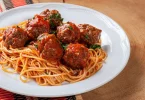Man has always used whole grains of cereal in his nutrition. Only modern technology and more advanced wheat processing have replaced the classic stone mills. That led to the mass production of white flour, in which many saw the opportunity for good profits. Material gain has become more important than health.
Discarding whole grains and focusing solely on refined products, modern humanity has gradually suppressed other cereals. Although they still made up a large part of our diet, our choice of cereal mostly came down to wheat and corn, possibly rice.

What other cereals are, and how much they are present in our diet, check on the link below: https://www.healthline.com/nutrition/15-healthiest-cereals
Plants like rye, oats, millet, and spelt are unfairly forgotten. However, with the popularization of healthy eating, and especially the regimen that requires the elimination of gluten from the diet, this group of foods is slowly but surely returning to its deserved place in our nutrition.
Is Gluten Harmful?

The story of gluten is not new, but it has become indispensable in the last few years when it comes to healthy eating. This cereal protein has become a bad boy of nutrition, and people have started avoiding food containing gluten, and base their meals only on particular ingredients.
Most people think gluten-free and healthy diets are almost identical, which is not entirely true. More because of the trend than health, more and more people are turning to these diets. Eliminating this nutrient from your menu should be medically justified, and it depends on what (if any) symptoms you have.
Some people just don’t tolerate gluten, while others can have serious complications due to its intake. Severe allergy to this protein is called celiac disease, and there are indeed people who suffer from it. These are persons whose bodies don’t tolerate this protein; that is, the mucous membranes of their intestines can’t process it.
Symptoms of Gluten Intolerance
People with celiac disease may experience diarrhea, abdominal pain, cramps, bloating, etc., every time they eat regular food. Only in this case is it justified to drop gluten from the nutrition. In other situations, these diets are not recommended.
Mentioned symptoms can cause great confusion, as people can mix them with the usual signs of fatigue, stress, or other illness. People who are self-diagnosed with gluten intolerance and arbitrarily drop many foods from the diet can create a serious problem. A simple check should solve the dilemma of whether or not they have this type of allergy.
Role of Grains in Gluten-Free Diets
At first, grains were believed to be the main culprit for health complications because they contain the most gluten. That’s partly true, so most people first eliminate this food group. But gluten is also found in many other foods, only in smaller quantities.
Many have a hard time giving up cereal products, such as bread, pasta, and pastries, but also snacks and industrial foods. But a gluten-free diet doesn’t necessarily have to be yucky and poor in nutrients. Just enough food is allowed so you can be creative and prepare delicious meals. You can eat fruits, vegetables, meat, but also gluten-free cereals and pseudocereals.
Corn, rice, and millet are cereals that are well known and represented in traditional meals. In pure form, they can be used as grain or flour. Buckwheat is also a gluten-free ingredient, but due to its specific taste, it is less common in food preparation.
Quinoa and amaranth recently become popular and prevalent. Amaranth is a worthy substitute for wheat. Its fine grains contain useful fibers, proteins, folates, and minerals. Don’t forget chia seeds, which you can put in almost all dishes or use as a thickener for smoothies, puddings, mashes, etc.
Wheatgrass for Celiac Patients
While wheat is an absolute no-no in celiac patients, wheatgrass is more than welcome. It is not very tasty and doesn’t have an excellent caloric value, but when combined with healthy ingredients, it produces a real energy bomb full of potent nutrients.
If you have made an effort to get informed about this food, you have probably come to various sources and wondered, what is Pines International Wheatgrass? There you can find information on how to consume these foods, and currently, the most popular forms are juice, pills, or wheatgrass based powder.
This superfood has become very popular lately as an essential means of detoxifying the organism. It contains almost all the micronutrients we need daily. Due to its alkaline composition, it has been proven that wheatgrass has a beneficial effect on reducing the acidity level of the body, which can certainly prevent many diseases.
Wheatgrass has an abundance of vitamins and minerals but is a relatively new food. Celiac patients should consult a doctor before they start using it. Its commercial use is yet to expand, although it is something we can produce at home (from wheat germ).








